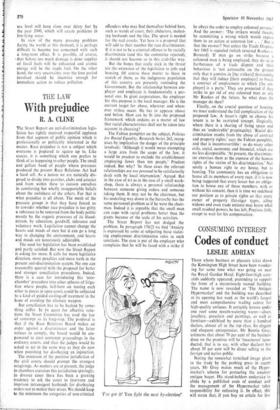Second Flood?
SCIENCE
PETER J. SMITH The earth is slowly getting warmer, and one of the most significant results of this pro- cess is the gradual melting of the Antarctic ice cap. If this continues unchecked, in due course the possibility of a new Flood, on a global scale, will be by no means fanciful.
This perhaps distant threat has to be seen as • yet another aspect of the problem of air pollution, and it is one more argument for taking every possible measure to reduce this pollution. Of course, the obnoxious by- products of the burning of fossil fuels such as coal and petroleum are obvious enough to anyone familiar with modern city life.
Visible carbon deposits and invisible, but acidic, gases such as sulphur dioxide take their toll of life and property. In some places, at certain times of the day, toxic gases such as carbon monoxide already exceed allow- able industrial limits. But the danger from the associated carbon dioxide (which is, ironically, quite harmless to man) is one which will only arise in the longer term.
Carbon dioxide is a colourless, odourless gas which will be familiar to many as the 'fizz' in lemonade. It is essential for life: plants
depend on it for their existence, animals obtain much of their essential carbon from
plants, and man, by eating both plants and animals, takes up the carbon he needs. The cycle is completed when animals and humans breathe out carbon dioxide, which partially compensates for atmospheric depletion.
But in addition, certain important non-cyclic processes operate. Over the past several billion years, for example, large quantities of carbon dioxide have entered the atmosphere from volcanoes, although to compensate for this, much vegetable matter has remained in the earth during its conversion to fossil fuel. As far as we know, nature has seen to it that the quantity of carbon dioxide in the atmo- sphere has remained roughly constant for a considerable period. But over the past few centuries, man, confounding nature as usual, has begun to burn the coal and oil that have been locked in the earth for millions of years, with the result that there has been a measurable increase in the atmospheric carbon dioxide content. As far as the carbon life-cycle is con- cerned this is not important. It happens, how- ever, that carbon dioxide is largely opaque to heat. Visible light from the sun reaches the earth's surface to produce heat, much of which cannot escape. The effect is precisely that which occurs in the greenhouse, the atmospheric carbon dioxide taking the place of the green- house glass.
Bearing in mind a typical British winter, a warmer earth sounds rather attractive; but unfortunately, nature has its own way of fighting-back. The Antarctic ice cap is slowly melting. When the 4,000 million million tons of ice have melted completely, sea level will have risen 400 feet, with the consequent in- undation of many inhabited areas, including most of our major cities. It is difficult to estimate how long this process will take, although figures ranging from 400 to 4,000 years have been quoted in the scientific literature. The problem may thus seem far ahead; but if the lower estimate is correct,
sea level will have risen over thirty feet by the year 2000, which will create problems in low-lying areas.
In view of the many pressing problems facing the world at this moment, it is perhaps difficult to become too concerned with such a long-term effect. It is possible, of course, - that before too much damage is done supplies of fossil fuels will be exhausted and atomic energy will be the staple fuel. On the other hand, the very uncertainty over the time period involved should be incentive enough for immediate action to reduce pollution.







































 Previous page
Previous page